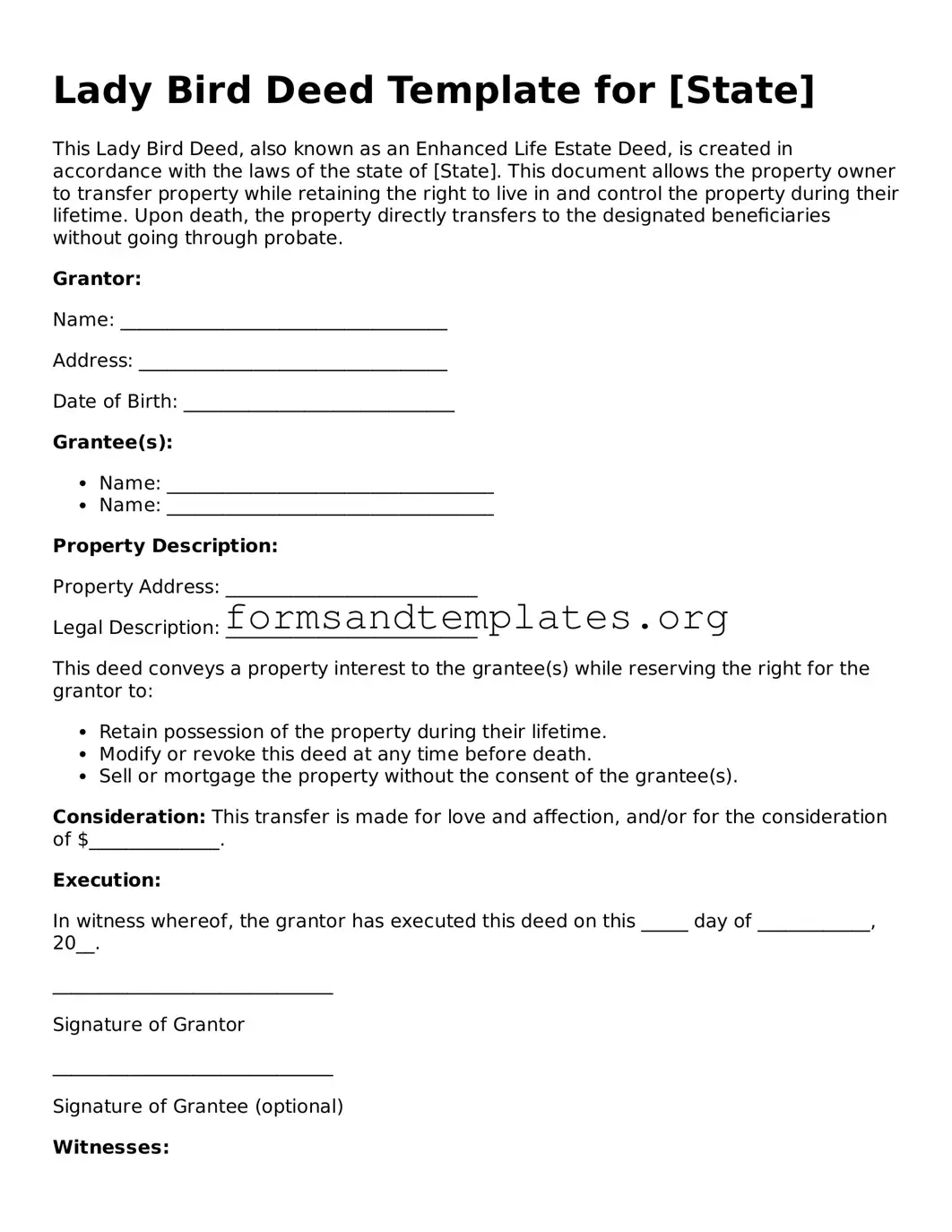Lady Bird Deed Template for [State]
This Lady Bird Deed, also known as an Enhanced Life Estate Deed, is created in accordance with the laws of the state of [State]. This document allows the property owner to transfer property while retaining the right to live in and control the property during their lifetime. Upon death, the property directly transfers to the designated beneficiaries without going through probate.
Grantor:
Name: ___________________________________
Address: _________________________________
Date of Birth: _____________________________
Grantee(s):
- Name: ___________________________________
- Name: ___________________________________
Property Description:
Property Address: ___________________________
Legal Description: ___________________________
This deed conveys a property interest to the grantee(s) while reserving the right for the grantor to:
- Retain possession of the property during their lifetime.
- Modify or revoke this deed at any time before death.
- Sell or mortgage the property without the consent of the grantee(s).
Consideration: This transfer is made for love and affection, and/or for the consideration of $______________.
Execution:
In witness whereof, the grantor has executed this deed on this _____ day of ____________, 20__.
______________________________
Signature of Grantor
______________________________
Signature of Grantee (optional)
Witnesses:
Signature: ______________________________ Date: _______________
Signature: ______________________________ Date: _______________
State of [State], County of ____________________
This instrument was acknowledged before me on the _____ day of ______________, 20__, by ___________.
______________________________
Notary Public
My commission expires: _______________
